Asian Art Museum presents striking works from three influential Islamic empires
Pen box, with reed pen in penholder, from the gun set of Mahmud I, approx. 1732 (Ottoman period (1300–1922)). Turkey. Gilded silver, emeralds, rubies (or spinels), and reed tip. The Walters Art Museum, Baltimore, Acquired by Henry Walters, 1903, 51.78 and 51.87. Photograph © The Walters Art Museum, Baltimore.
SAN FRANCISCO, CA.- In the cosmopolitan Islamic world of the 16th through 18th centuries, the exciting global exchange of people, ideas and technologies resulted in an atmosphere ripe for innovation. From Feb. 26–May 8, 2016, the Asian Art Museum of San Francisco presents Pearls on a String: Artists, Patrons, and Poets at the Great Islamic Courts , an exhibition telling the personal stories of three creative individuals who flourished within these stimulating societies. Through the written word, painted image and ingeniously engineered object, these men explored new ideas and perspectives — making a lasting impact on the legacies of their empires.
Pearls on a String is one of a trio of special exhibitions kicking off the museum’s 50th anniversary year. The exhibition, says museum director and CEO Jay Xu, embodies the goal that motivated the museum’s creation back in 1966 and still guides it today: to serve as a ‘bridge to understanding’ between East and West.
“The Asian Art Museum showcases art that emphasizes connections across time and place,” Xu says. “ Pearls on a String does just that, taking us back to a time of tolerance, when Islamic rulers welcomed many religions in their courts, and diverse groups of intellectuals and artisans were encouraged to exchange ideas and work together.”
Through more than 60 exquisite artworks, including an eye-catching bejeweled rifle, the exhibition introduces three fascinating and influential figures: the 16th-century writer Abu’l Fazl in Fatehpur Sikri, the 17th-century painter Muhammad Zaman in Isfahan, and the 18th-century patron Sultan Mahmud I in Istanbul.
“By providing a rare glimpse of the worlds these figures inhabited, including the social connections that ignited their creativity , Pearls on a String highlights the importance of both individual initiative and human relationships in creating masterful works of art,” says exhibition curator Qamar Adamjee, associate curator of South Asian and Islamic art.
Pearls on a String is organized into three vignettes, each delving into the life of one of the individuals and the society in which he lived.
Section 1: The Writer | Abu’l Fazl at the Mughal Court
Entering the exhibition, you’ll first get to know writer and historian Abu’l Fazl ibn Mubarak (1551–1602). Abu’l Fazl witnessed and recorded events both intimate and momentous at the court of Emperor Akbar in 16th-century Mughal India (present-day Pakistan and India). Through Abu’l Fazl’s words, the legacy of this emperor’s influential reign has been preserved for posterity.
From the age of 23 until his death at 51, Abu’l Fazl served the emperor as advisor, chief secretary, ambassador, court historian, translator and trusted friend. His intellectual vigor, humanitarian values and liberal religious sentiments resonated with Akbar, whose court was a multicultural community that engaged with a variety of religious, artistic and intellectual traditions.
Illuminated frontispiece, from the Akbarnama (Book of Akbar), approx. 1600–1603. India, Mughal period (1526–1857). Opaque watercolors, ink, and gold on paper. Trustees of the Chester Beatty Library, Dublin, In 03.1b–2a. Photograph © The Trustees of the Chester Beatty Library, www.cbl.ie.
Abu’l Fazl presenting the Akbarnama to Akbar, from the Akbarnama (Book of Akbar), approx. 1600–1603, by attributed to Govardhan (Indian). Opaque watercolors, ink, and gold on paper. Trustees of the Chester Beatty Library, Dublin, In 03.176b. Photograph © The Trustees of the Chester Beatty Library, www.cbl.ie.
Akbar Presiding over Discussions in the Ibadatkhana, from the Akbarnama (Book of Akbar), approx. 1600–1603, by attributed to Narsingh (Indian). Opaque watercolors, ink, and gold on paper. Trustees of the Chester Beatty Library, Dublin, In 03.263b. Photograph © The Trustees of the Chester Beatty Library, www.cbl.ie.
Illuminated frontispiece, from the Khamsa (Quintet) of Amir Khusraw Dihlavi, 1597–1598, by attributed to Husayn Naqqash (Indian). Opaque watercolors and ink on paper.. The Walters Art Museum, Baltimore, Acquired by Henry Walters, W.624.42a. Photograph © The Walters Art Museum, Baltimore.
Majnun Is Visited in the Wilderness by his Father, from the Khamsa (Quintet) of Amir Khusraw Dihlavi, 1597–1598, by attributed to Lal (Indian). Opaque watercolors and ink on paper. The Walters Art Museum, Baltimore, Acquired by Henry Walters, W.624.100b. Photograph © The Walters Art Museum, Baltimore.
The Story of the Wrongly Exiled Prince as Told by the Princess of the Sandalwood Pavilion, from the Khamsa (Quintet) of Amir Khusraw Dihlavi, 1597–1598, by attributed to Mukund (Indian). Opaque watercolors, ink, and gold on paper. The Walters Art Museum, Baltimore, Acquired by Henry Walters, W.624.203b. Photograph © The Walters Art Museum, Baltimore.
Turktazi’s Visit to the Magical Garden of Turktaz, Queen of the Fairies, from the Khamsa (Quintet) of Nizami, 1675–1676, by Muhammad Zaman (Iranian). Opaque watercolors, ink, and gold on paper. The British Library, London, Or. 2265, fol. 221v. Photograph © The British Library Board.
Scenic animal carpet, approx. 1625. India, Mughal period (1526–1857). Wool pile on cotton warp and cotton weft. National Gallery of Art, Washington, D.C., Widener Collection, 1942.9.475. Photograph Courtesy National Gallery of Art, Washington D.C.
Section 2: The Painter | Muhammad Zaman at the Safavid Court
Next, you’ll meet the painter Muhammad Zaman ibn Haji Yusuf (active 1670–1700), who dramatically innovated 17th-century Persian painting at the Safavid court of Shah Sulayman (ruled 1666–94) in Isfahan, Iran.
Zaman is recognized as the pioneer of farangi - sazi (European style), which combined Persian artistic traditions with European iconography and techniques. His hybrid style was used to reinterpret some of the greatest stories of Persian poetry, shining a new light on traditional lore.
As you’ll discover in Pearls on a String , this blending of European and Persian styles of painting was inspired by increasing diversity of the capital of Isfahan. During the 17th century, Western artists, adventurers and merchants poured in, mixing with the existing population primarily comprised of Persian and Central Asian Muslims, Georgians, Armenians, Circassians, Jews and Zoroastrians. The result was a multicultural society that gave Zaman his creative fuel.
Page of text from the Shahnama (Book of Kings) of Firdausi, 1500–1600. Iran, Safavid period (1501–1722). Opaque watercolors, ink, and gold on paper. Trustees of the Chester Beatty Library, Dublin, Per 277.1b–2a. Photograph © The Trustees of the Chester Beatty Library, www.cbl.ie.
Simurgh Assisting at the Birth of Rustam, from the Shahnama (Book of Kings) of Firdausi, 1675 –1676, by Muhammad Zaman (Iranian). Opaque watercolors, ink, and gold on paper. Trustees of the Chester Beatty Library, Dublin, Per 277.3. Photograph © The Trustees of the Chester Beatty Library, www.cbl.ie.
Carpet of the so-called “Polonaise” type, 1600–1700 (Isfahan, Safavid period (1501– 1722)). Iran. Brocaded silk and silver. The Walters Art Museum, Baltimore, Acquired by Henry Walters, 81.8. Photograph © The Walters Art Museum, Baltimore.
Christ in Glory with Donor and Painter and Last Judgment, Armenian Gospel Book, 1655, by Ter Hayrapet (Armenian) (Safavid period (1501–1722)). Iran. Opaque watercolors, ink, and gold on paper. Trustees of the Chester Beatty Library, Dublin, Arm 578.15v–16r. Photograph © The Trustees of the Chester Beatty Library, www.cbl.ie.
The Return from the Flight into Egypt, 1689, by Muhammad Zaman (Iranian). Opaque watercolors, ink, and gold on paper. Harvard Art Museums/Arthur M. Sackler Museum, Cambridge, Mass., gift of John Goelet, 1966.6. Photograph courtesy of Imaging Department © President and Fellows of Harvard College.
Section 3: The Patron | Sultan Mahmud at the Ottoman Court
The final figure you’ll meet is Sultan Mahmud I (ruled 1730–54), who was celebrated in his day both as a sponsor of the arts and as a ruler who brought peace to the Ottoman Empire. Pearls on a St ring explores collaborations between Mahmud, his artisans and merchants, who developed a cosmopolitan court in Istanbul, the empire’s capital, poised at the crossroads of Asia and Europe.
Mahmud — a stout, hunchbacked man without experience in imperial affairs — had many challenges to overcome upon gaining the throne. As a boy in 1703, he witnessed his father’s humiliating removal from office by his uncle Ahmed III (ruled 1703–30). Then in 1730, a revolt broke out against Ahmed, and Mahmud was appointed ruler of a vast and unstable empire. Those who put him on the throne thought they could control him, but Mahmud proved them wrong. He was able to calm public unrest and initiate military reforms.
Using art and architectural patronage, Mahmud underscored his royal lineage and communicated his vision of a technologically advanced empire engaged with Europe. Mahmud was personally involved in commissions and appreciated cleverly engineered objects constructed of rare materials. One of the most remarkable pieces on display in Pearls on a String is a jeweled gun commissioned by Mahmud, which contains a curious assemblage of objects: a gold dagger, a pen case with writing instruments and other accessories, all lavishly encrusted in diamonds, rubies and emeralds.
Portrait of Mahmud I, from A Series of Portraits of the Emperors of Turkey, 1815, by engraved by John Young ((English, 1755–1825)). Mezzotint. National Gallery of Art Library, Washington, D.C., gift of Mr. Ferdinand Lammot Belin, N7614.T9 Y6. Photograph courtesy National Gallery of Art Library, Washington, D.C.
Cleaner for flashpan and flintlock from the gun set of Mahmud I, approx. 1732 (Ottoman period (1300–1922)). Turkey. Silver, gilded silver, and diamonds. The Walters Art Museum, Baltimore, Acquired by Henry Walters, 1903, 51.89. Photograph © The Walters Art Museum, Baltimore.
Dagger from the gun set of Mahmud I, approx. 1732 (Ottoman period (1300–1922)). Turkey. Steel, gold wire, gilded silver, rubies (or spinels), and emeralds (or beryls). The Walters Art Museum, Baltimore, Acquired by Henry Walters, 1903, 51.76. Photograph © The Walters Art Museum, Baltimore.
Jeweled gun of Sultan Mahmud I, with nineteenth century Russian flintlock, 1732/1733 (Ottoman period (1300–1922)). Turkey. Gun: steel, wood, gold, gilded silver, silver, nephrite, diamonds, emeralds, and rubies (or spinels); flintlock: steel and gold. The Walters Art Museum, Baltimore, Acquired by Henry Walters, 1903, 51.84. Photograph © The Walters Art Museum, Baltimore.
Jeweled gun, with pen box, spoon, flintlock cleaner, reed pen in penholder, pen knife, and dagger, from the gun set of Mahmud I, 1732 (Ottoman period (1300–1922)). Turkey,. Steel, wood, gold wire, gilded silver, silver, nephrite, diamonds, rubies (or spinels), emeralds (or beryls), and reed tip.. The Walters Art Museum, Baltimore, Acquired by Henry Walters, 1903, 51.76, .78, .84, .87-.89; and 57.620. Photograph © The Walters Art Museum, Baltimore.
Pen box, reed pen in penholder, and pen knife, from the gun set of Mahmud I, approx. 1732 (Ottoman period (1300–1922)). Turkey. Gilded silver, emeralds, rubies (or spinels), and reed tip. The Walters Art Museum, Baltimore, Acquired by Henry Walters, 1903, 51.78, 51.87, and 57.620. Photograph © The Walters Art Museum, Baltimore.
Pen knife from the gun set of Mahmud I, approx. 1732. (Ottoman period (1300–1922)). Turkey. Steel, gilded silver, gold, emeralds, rubies (or spinels), and nephrite.. The Walters Art Museum, Baltimore, Acquired by Henry Walters, 1903, 57.620. Photograph © The Walters Art Museum, Baltimore.
Spoon from the gun set of Mahmud I, approx. 1732. (Ottoman period (1300–1922)). Turkey. Silver, gilded silver, emeralds (or beryls), diamonds, and sapphires.. The Walters Art Museum, Baltimore, Acquired by Henry Walters, 1903, 51.88. Photograph © The Walters Art Museum, Baltimore.
Album of calligraphy, 1500–1800, by Seyh Hamdullah (Turkish). Opaque watercolors and ink on paper with sheepskin and gold cover. The Walters Art Museum, Baltimore, Acquired by Henry Walters, W.672. Photograph © The Walters Art Museum, Baltimore.
Hilya-i Nabi (Description of the Prophet), 1691, by Hafiz Osman (Turkish). Opaque watercolor, ink, and gold on paper. Trustees of the Chester Beatty Library, Dublin, T 559.4. Photograph © The Trustees of the Chester Beatty Library, www.cbl.ie.
Illuminated ferman (royal decree) with ornamental tughra (insignia) of Sultan Ahmed III, 1721 (Ottoman period (1300–1922)). Turkey. Opaque watercolors, ink, and gold on paper. Harvard Art Museums/Arthur M. Sackler Museum, Cambridge, The Edwin Binney 3rd Collection of Turkish Art at the Harvard Art Museums, 1985.247. Photograph courtesy of Imaging Department © President and Fellows of Harvard College.
Map of the City of Istanbul, from Book on Navigation, approx. 1675–1725, by Piri Reis (Turkish). Opaque watercolors and ink on paper with leather and gold cover. The Walters Art Museum, Baltimore, Acquired by Henry Walters, W.658.370b–371a. Photograph © The Walters Art Museum, Baltimore.
Map of the Coast of the Black Sea, from Book on Navigation, approx. 1675–1725, by Piri Reis (Turkish). Opaque watercolors and ink on paper with leather and gold cover. The Walters Art Museum, Baltimore, Acquired by Henry Walters, W.658.370b–371a. Photograph © The Walters Art Museum, Baltimore.
Watch made for the Ottoman market, 1700–1800, by Nikolaki (Greek). Case: niello, resin, and gilded silver; dial: basse-taille enamel on gilded silver and pearl; movement: gilded brass, steel, and pearl. The Walters Art Museum, Baltimore, Acquired by Henry Walters, 58.81. Photograph © The Walters Art Museum, Baltimore.

/https%3A%2F%2Fprofilepics.canalblog.com%2Fprofilepics%2F1%2F0%2F100183.jpg)
/https%3A%2F%2Fstorage.canalblog.com%2F03%2F02%2F119589%2F96711876_o.jpg)
/https%3A%2F%2Fstorage.canalblog.com%2F11%2F31%2F119589%2F94773502_o.jpg)
/https%3A%2F%2Fstorage.canalblog.com%2F20%2F83%2F119589%2F94772815_o.jpg)
/https%3A%2F%2Fstorage.canalblog.com%2F26%2F72%2F119589%2F75604929_o.jpg)
/https%3A%2F%2Fstorage.canalblog.com%2F59%2F60%2F119589%2F26458628_o.jpg)
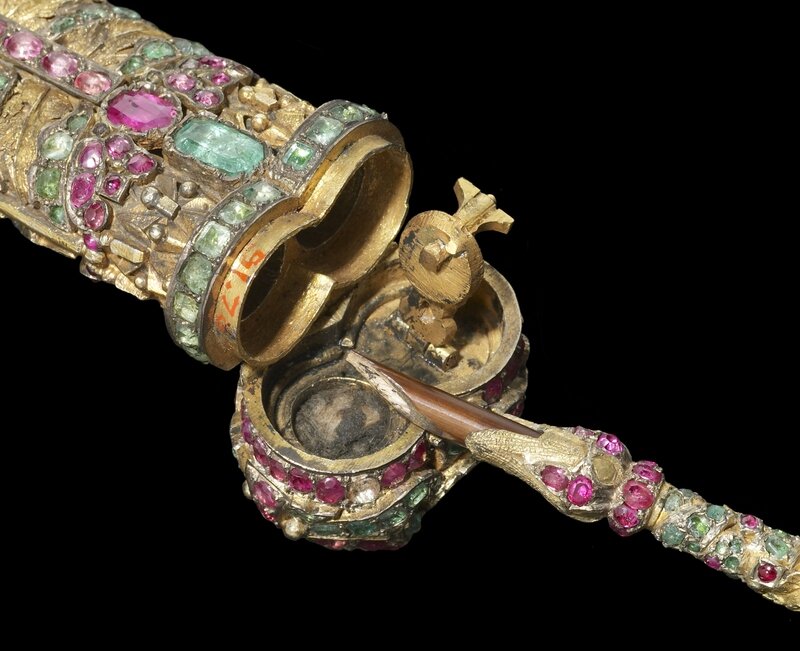




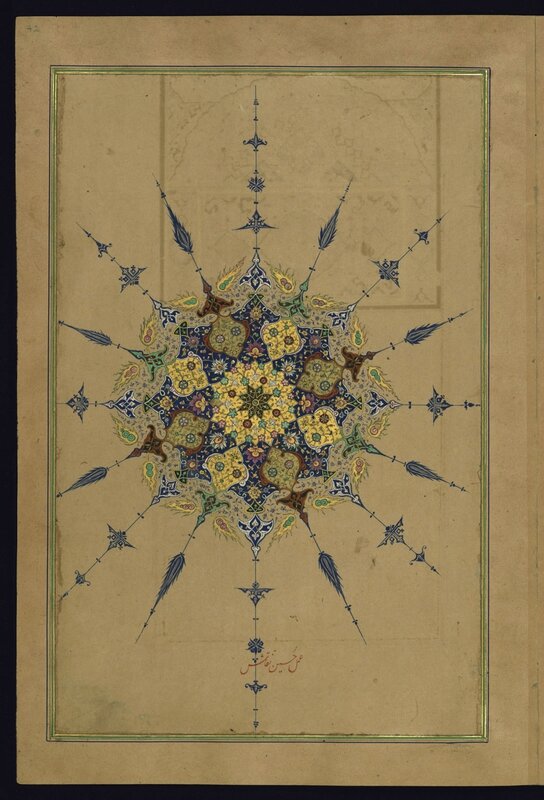


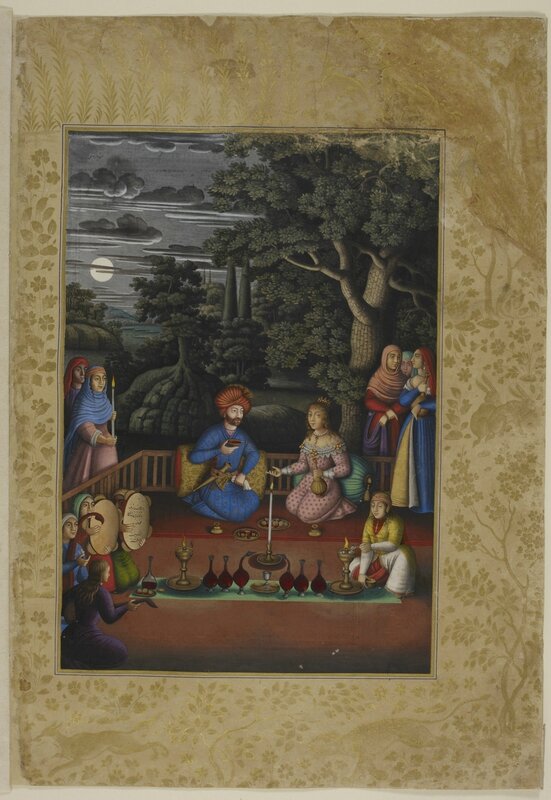
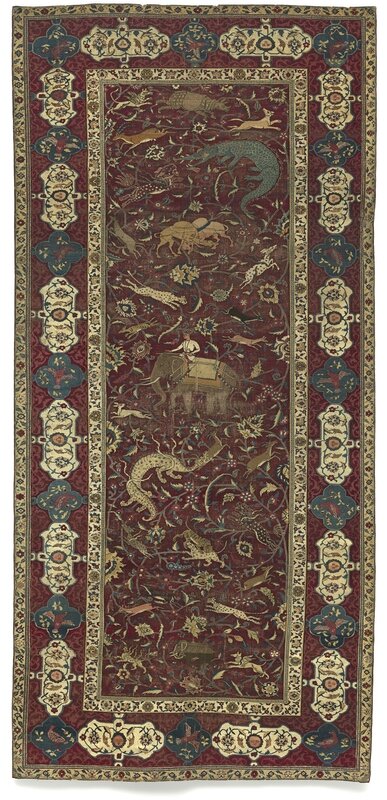


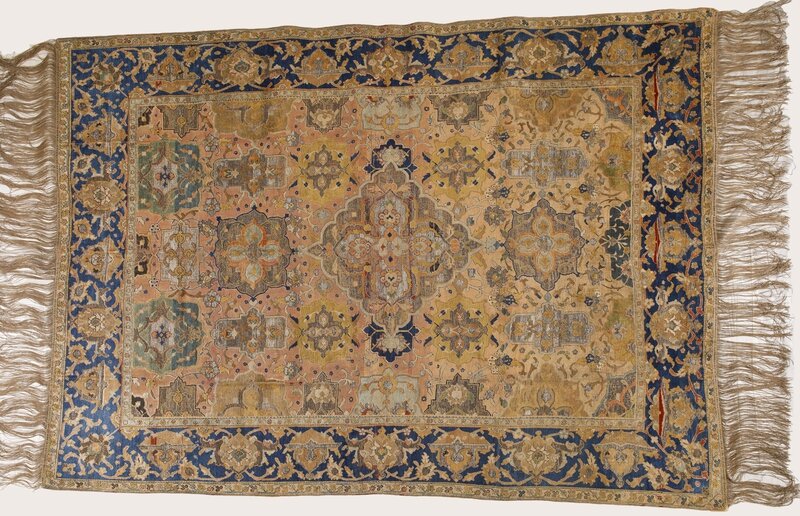



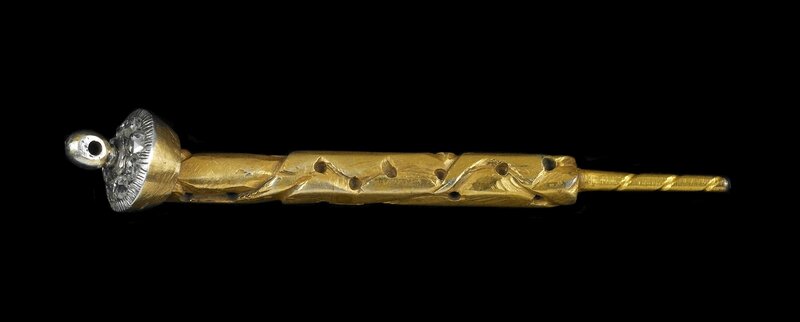








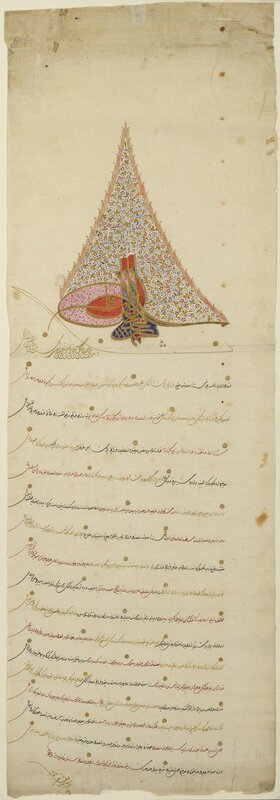




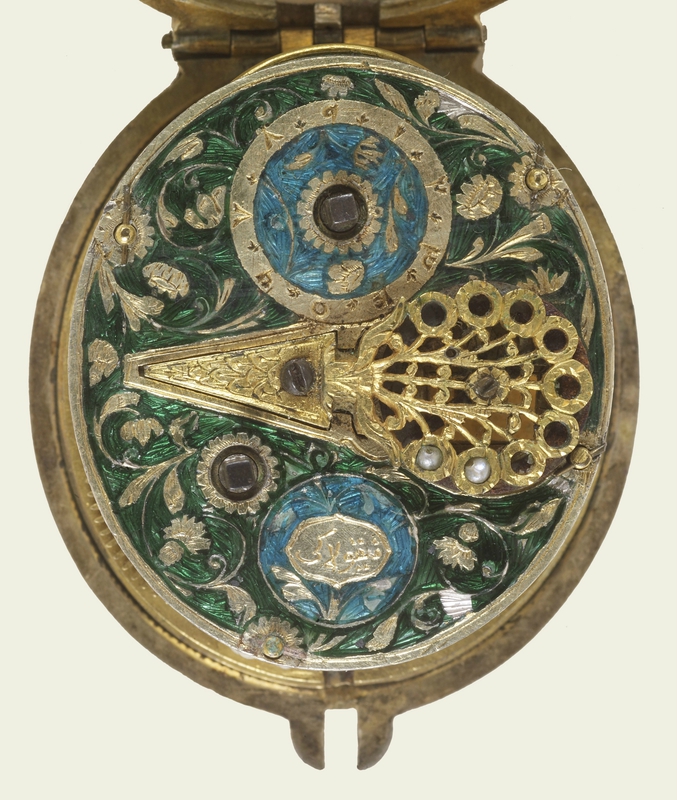



/http%3A%2F%2Fstorage.canalblog.com%2F56%2F02%2F119589%2F94588119_o.jpg)
/image%2F1371349%2F20240423%2Fob_b2fe42_telechargement-9.jpg)
/image%2F1371349%2F20240423%2Fob_af8bb4_telechargement-6.jpg)
/image%2F1371349%2F20240423%2Fob_b6c4a6_telechargement.jpg)